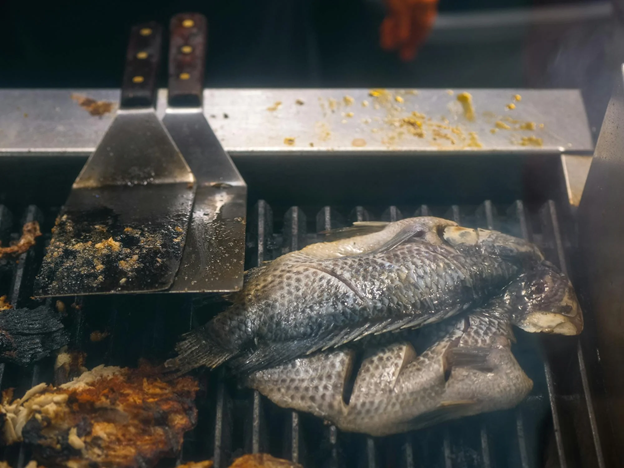Buší represents a culinary tradition steeped in history and rich in flavors, originating from a blend of indigenous and colonial influences. This traditional dish, while not universally recognized, captures the essence of a culinary heritage that spans generations, embodying the cultural fusion that characterizes the regions from which it hails. Predominantly featuring ingredients such as meat, plantains, cheese, and achiote oil, Buší offers a savory and colorful palette to the gastronomic explorer.
The History and Origins of Buší
The roots of Buší trace back to the indigenous communities that thrived in regions where the natural bounty provided by the land was both sustenance and inspiration for culinary creativity. With the arrival of European colonizers, new ingredients and cooking techniques were introduced, leading to a fusion of flavors and the birth of dishes like Buší. This culinary melding symbolizes the resilience and adaptability of indigenous culinary practices, evolving through time to incorporate new influences while retaining core traditional elements.

Buší Ingredients
The authentic Buší dish is a celebration of natural and flavorful ingredients:
- Meat: A cornerstone of Buší, offering richness and depth. Variations might include pork, chicken, or beef, each bringing its unique flavor profile.
- Plantains: Their sweetness and texture balance the savory components, providing a unique contrast in the dish.
- Cheese: Adds a creamy, salty dimension, enhancing the overall flavor harmony.
- Achiote oil: Known for its vibrant color and subtle earthiness, achiote oil is a distinctive element that not only adds to the visual appeal but also infuses Buší with its characteristic taste.
How to Make Authentic Buší Dishes at Home
Creating Buší at home involves a few essential steps:
- Marinating the Meat: Begin by marinating your choice of meat in a mixture of achiote oil, garlic, citrus juice, and spices to infuse it with flavor.
- Preparing the Plantains: Slice the plantains and either fry or boil them until tender, depending on the recipe.
- Assembling the Dish: Layer the cooked meat, plantains, and cheese, often in a clay pot or baking dish, allowing the flavors to meld together.
- Cooking: Bake or simmer the assembled dish until the cheese is melted and bubbly, and the flavors are thoroughly combined.
Dishes to Try
- Buší House Special: A signature dish that combines the traditional ingredients in a unique way, often featuring a secret blend of spices.
- Buší Kitchen Classic: Focuses on the rustic and homey version of Buší, emphasizing the simplicity and depth of flavors achieved with minimal ingredients.
- Modern Buší Variations: Contemporary chefs have experimented with adding ingredients like seafood, exotic cheeses, and even vegan substitutes to cater to a broader palate.
Buší’s Evolution: Local to Global
Originally a local specialty, Buší has transcended its regional origins to gain recognition in the global culinary scene. This journey from local kitchens to international tables showcases the universal appeal of comfort food that tells a story of cultural confluence and culinary innovation.
Buší Tasting Events and Festivals
Buší tasting events and festivals celebrate the dish’s cultural significance, offering enthusiasts a platform to explore its various interpretations. These events often feature cooking demonstrations, tastings, and competitions, highlighting the dish’s versatility and the creativity of its chefs.
The Different Styles and Variations of Buší
The evolution of Buší has led to a diverse spectrum of styles and variations, each reflective of the local ingredients, culinary techniques, and cultural preferences. From the traditional rustic versions to modern gourmet interpretations, Buší continues to adapt and thrive, proving its enduring appeal.
Conclusion
Buší stands as a testament to the power of culinary tradition to unite diverse cultures and histories. Its journey from a local delicacy to a dish celebrated on the global stage illustrates the dynamic nature of food as a form of cultural expression. As Buší continues to evolve, it remains a vibrant symbol of culinary heritage, inviting all to explore its rich flavors and storied past.
FAQs
Q: Can Buší be made vegetarian? A: Absolutely. Plantains and cheese serve as excellent bases for a vegetarian version, with beans or mushrooms as possible meat substitutes.
Q: Is Buší suitable for a gluten-free diet? A: Yes, Buší inherently contains no gluten, making it suitable for those on a gluten-free diet. Always check specific ingredients to be safe.
Q: How spicy is Buší? A: The spiciness of Buší can be adjusted according to personal preference. The use of achiote oil provides flavor without inherent heat, allowing for customization with additional spices or peppers.
Q: Where can I try Buší? A: Buší can be found in specialty restaurants that focus on traditional or fusion cuisines. Food festivals and culinary events may also offer opportunities to taste


